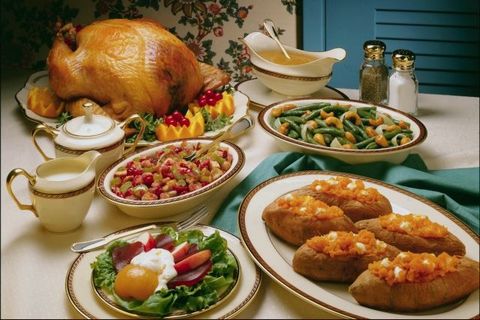While a traditional Christmas dinner is a heart-warming sight, and an excellent way to get together as a family and celebrate the holiday season, a festive dinner can be rich, fattening, and potentially harmful for your health. Since the holidays are a time to enjoy and indulge, this doesn’t mean that you should cut back completely – however, by employing a couple of techniques, you can make your holiday meals both healthy and delicious.
Shop prudently
Before you go shopping, plan out a healthy holiday menu, and draw up a grocery list accordingly. Make sure you buy fresh, healthy ingredients and low-fat products when it comes to items like milk and cheese. Try to avoid red meats, and stick to fish, poultry, and lean meats instead. In addition, refrain from buying too many processed products, and opt to make salad dressings and sauces at home, instead of buying the calorie-laden bottled varieties.
Use fat trimming tools
Employ clever cooking methods to eliminate the fat in food. When preparing meat, use skewers, which will also automatically aid in portion control, and place meats on a wire rack when roasting them in the oven, so all the fat can drip off. Use non-stick cookware on the stove, so you do not need to use too much oil, and employ a cheese grater to keep the usage of cheese to a minimum.
Cook light
Try to use as little oil, butter, lard, or fat as possible when cooking. Replace saturated fats with alternatives like olive oil, corn oil, and sunflower oil, etc. Bake instead of deep frying, toast instead of frying, use only egg whites where eggs are called for (hold the yolks), and use spices to make sure all the food is bursting with flavour, so no one notices the absence of fat. When it comes to desserts try to make either crustless or single-crust pies, and drop cookies, as these are less fattening as compared to rolled cookies.
Low-calorie sauces and dips
Stay away from the mayonnaise and heavy cream when making dips and sauces. Use purred red peppers to make a nutritious fat-free sauce, and add pureed beans to sauces to give them a thicker, creamier consistency. Use yogurt in dips, as opposed to using cream and cheese.
Fat-free dressings
Do not invest in bottled dressings, as these are filled with calories and low on nutrition. When making vinaigrettes, it is recommended that you alter the proportions so you use less olive oil and more vinegar. For creamier dressings, use a puree of cottage cheese, skim milk, or low-fat yogurt, and flavour generously with herbs.
Fortify with fibre
Instead of using lots of bread and buttered biscuits, try making the dishes more filling by using healthy fibre like bran, rye, and oatmeal – e.g. rye bread, oatmeal and bran muffins. Use bran when serving soups and sandwiches, to make them more filling and satisfying.





No Comment